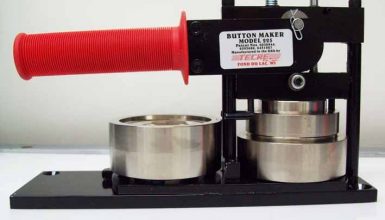Routers and drills both work by rotating a bit secured in a chuck, or collet. However, there are a few key differences between router bits and drill bits that you should be aware of.
The main difference is that a router bit shapes edges and cuts grooves while a drill is designed to bore holes. This difference in mechanical design means that drill bits won’t work well in a router.
Carbide Tips

Carbide tips work well with routers because they can withstand high temperatures and can maintain their sharp edge for longer than steel tools. They also resist abrasion and can be used on a variety of materials, including metals like aluminum and iron.
They are usually tipped with tungsten carbide, which is a hard compound of tungsten and carbon. They range between 8 and 9 on the Mohs scale (almost as hard as diamond).
Unlike tool steel, which gets dull over time, carbide tips remain sharp. They can hold an edge ten to twenty times longer than tool steel, making them ideal for cutting through metal, concrete and other tough materials.
In addition to the carbide tip, most router bits have a solid carbide blade ground into the body of the tool. The blades are forged from a micro-grain solid carbide alloy that provides an excellent balance between hardness and durability.
Flute
Router drill bits come in many different sizes, shapes and flute patterns. Each has its own unique strengths and weaknesses that are based on the job at hand.
Flutes are grooves that are formed between teeth as the bit rotates. Flute-equipped router bits allow more efficient chip evacuation, which translates into faster feed rates and a smoother cut.
Most router bits come in one-, two- or three-flute configurations. This can be a good trade-off between the strength to withstand high cutting forces and the ability to clear chips efficiently.
Spiral-flute router bits are a cross between a twist drill and a straight router bit, offering superior quality of cut thanks to their helical design. They also come in up, down and compression geometries to protect the bottom surface of a workpiece from tear out, and quickly clear chips from deep mortises or grooves.
Spiral upcut and down-cut bits are ideal for plunge cuts and leave surfaces in good shape, while compression-flute router bits are used to clear chips from thin workpieces and help prevent lift and rocking.
Shank
The shank of a router bit is the solid part that connects the bit body to the collet of your router. Shanks are a staple of most router bit sets, and they come in several types that help make routing easy and accurate.
One of the most common is a straight shank, which has no wobble to it. This is helpful in a drill or router because it allows for more accuracy to centering.
A brace shank is another type that’s often used. These have a tapered end that makes it easier to jam the bit into a specific tool.
Router bits with 1/2-inch shanks have more mass than those with 1/4-inch shanks, which helps to minimize vibration and “chatter.” The extra mass also aids in heat dissipation, as heat builds up when a router bit cuts into wood.
Base
There are a lot of router bits to choose from. To choose the right one, you need to know what your project is about and what type of cuts you need.
For example, if you need to shape a curved edge for a table or a window seal, a chamfer bit is ideal. This kind of bit has a ball bearing guide that helps the pilot bearing track the curve as you cut.
The ball bearings are far better than solid steel pilots, which could mar the wood and cause your router to over-cut. You can also use a fence or template and guide bushing with these kinds of cuts.
Summary:
There are two main types of router bits: drill bits and milling bits. Drill bits are good for making straight holes in a wood or metal workpiece and don’t have side edges that can move laterally as milling bits do.


